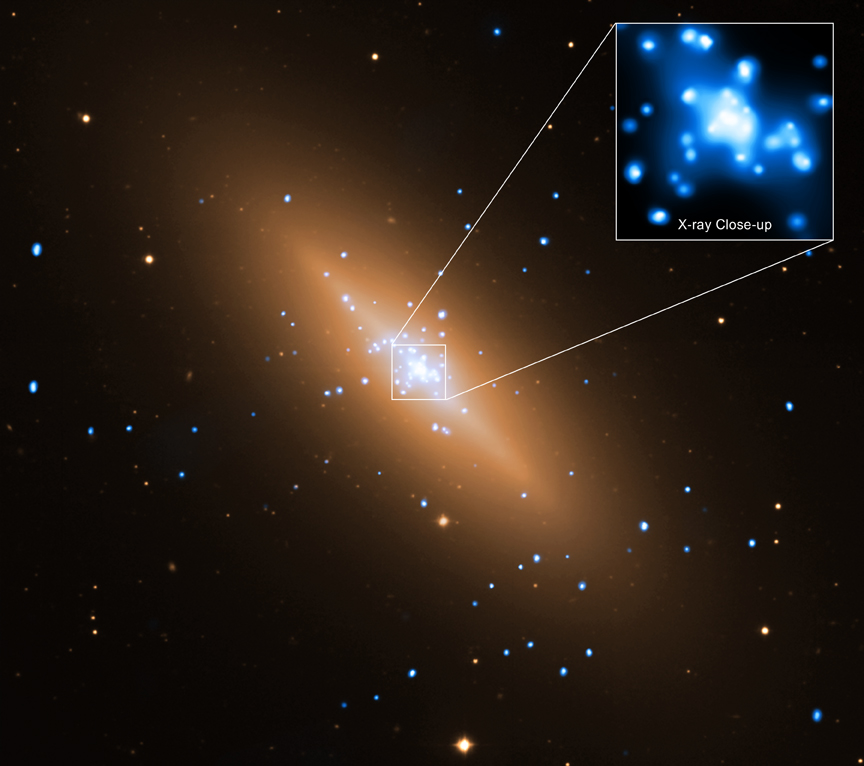
 Credit: X-ray: NASA/CXC/Univ. of Alabama/K.Wong et al, Optical: ESO/VLT
Credit: X-ray: NASA/CXC/Univ. of Alabama/K.Wong et al, Optical: ESO/VLT
Falling In
Matter on the precipice of a black hole must go on one wild ride. At least that's what we expect, based on Einstein's theory of general relativity. The insane gravity of the black hole warps both space and time, bending them to the will of the singularity hidden deep within the hole's event horizon. Imagine what you'd see if you fell in - at least for the few moments before you were crushed out of existence. Even the most ardent curiosity seekers would agree that it's better to observe the fate of something else falling in, and from a safe distance at that. Amazingly enough, astronomers using the high resolution spectral imaging of the Chandra X-ray Observatory now have provided us with a kind of direct view of matter which is falling into a monster black hole at the center of a galaxy known as NGC 3115. This black hole sucks in interstellar material from its host galaxy, and as the material falls down into the black hole, it both becomes denser and hotter. Using Chandra, astronomers for the first time have measured how this material heats up as it gets closer and closer to the black hole. The image above shows an optical image of NGC 3115 taken by ESO's Very Large Telescope; the inset in blue shows the Chandra X-ray image of the central regions of the galaxy. The bright points of light in the Chandra image are mostly X-ray binary stars (some of them containing relatively small, star-mass black holes as well). To measure the effect of the monster black hole on the surrounding gas, astronomers had to painstakingly correct for the emission of these X-ray binaries. This analysis suggests that the black hole in the center of NGC 3115 has a mass of about two billion times that of the Sun, making NGC 3115 the nearest billion-solar-mass black hole to Earth.
Published: August 1, 2010
<
HEA Dictionary ● Archive
● Search HEAPOW
● Other Languages
● HEAPOW on Facebook
● Download all Images
● Education ● HEAD
>

Each week the HEASARC
brings you new, exciting and beautiful images from X-ray and Gamma ray
astronomy. Check back each week and be sure to check out the HEAPOW archive!
Page Author: Dr. Michael F. Corcoran
Last modified Monday, 26-Feb-2024 17:22:49 EST


